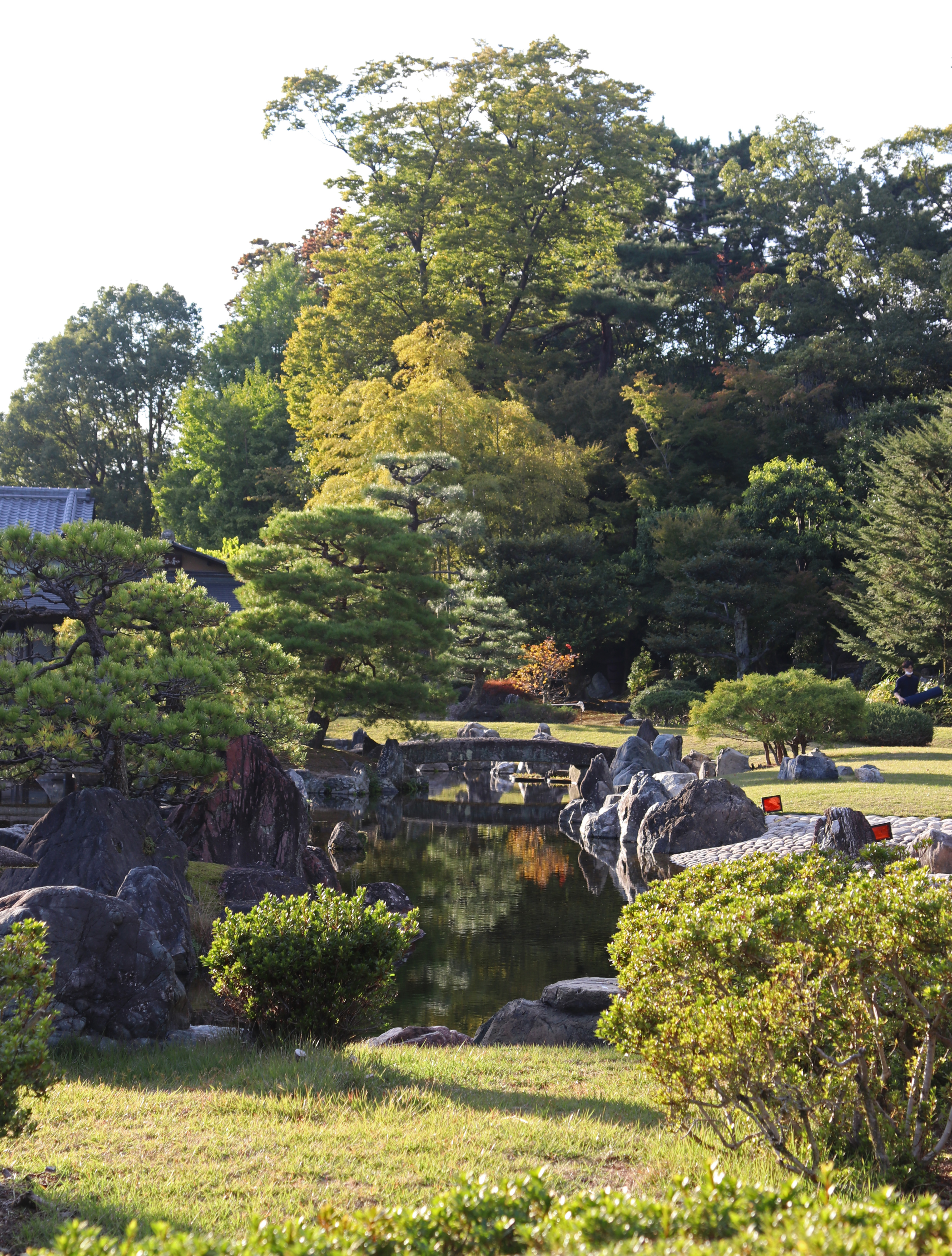Nijo Castle
Landing in the morning clearing customs and immigration its around 10:00am. Quick freshen up and we head off the station to purchase our train tickets. Our first destination is another visit to Kyoto, via the airport train (Haruka) direct to Kyoto, which takes exactly 1 hour 20 minutes.
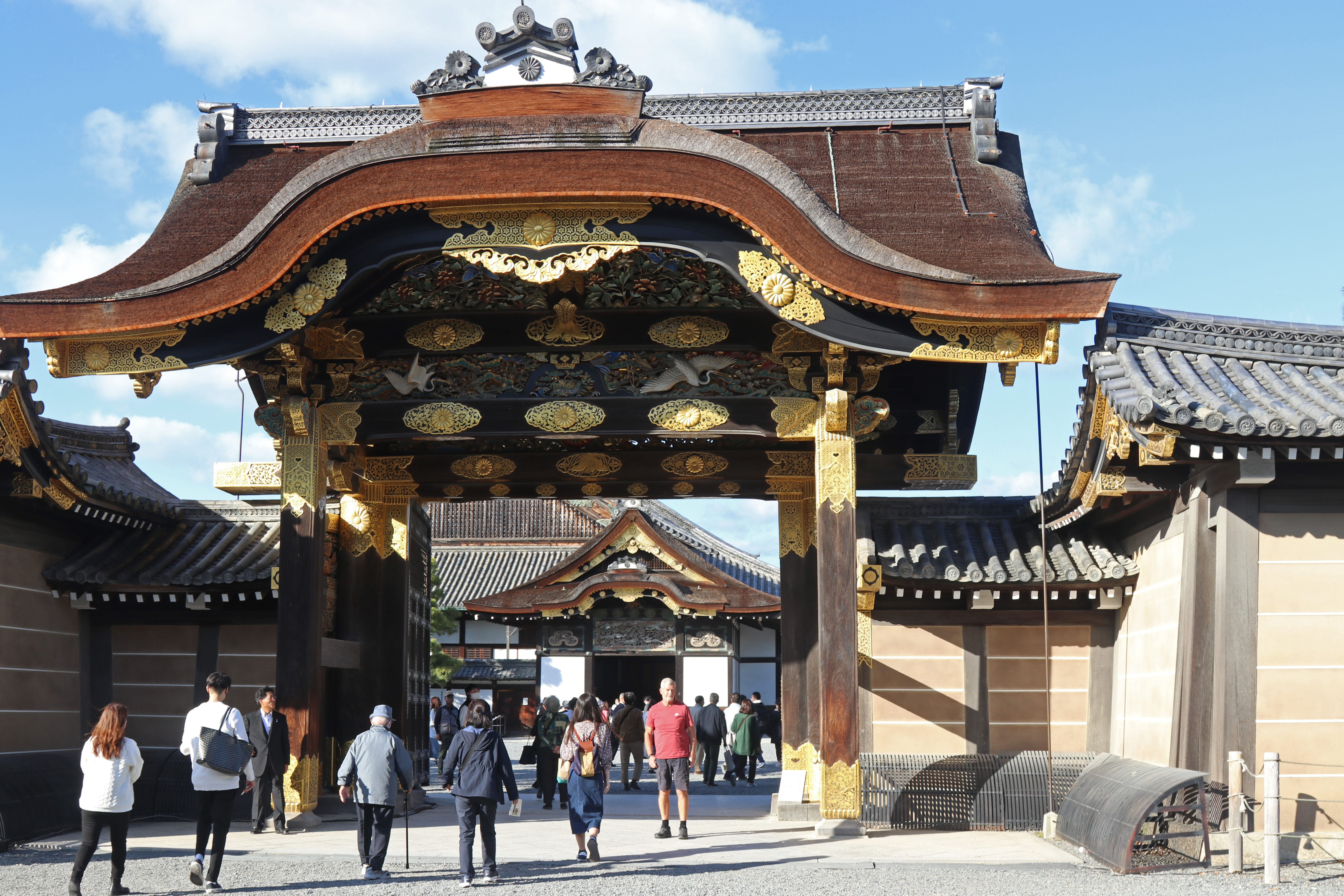
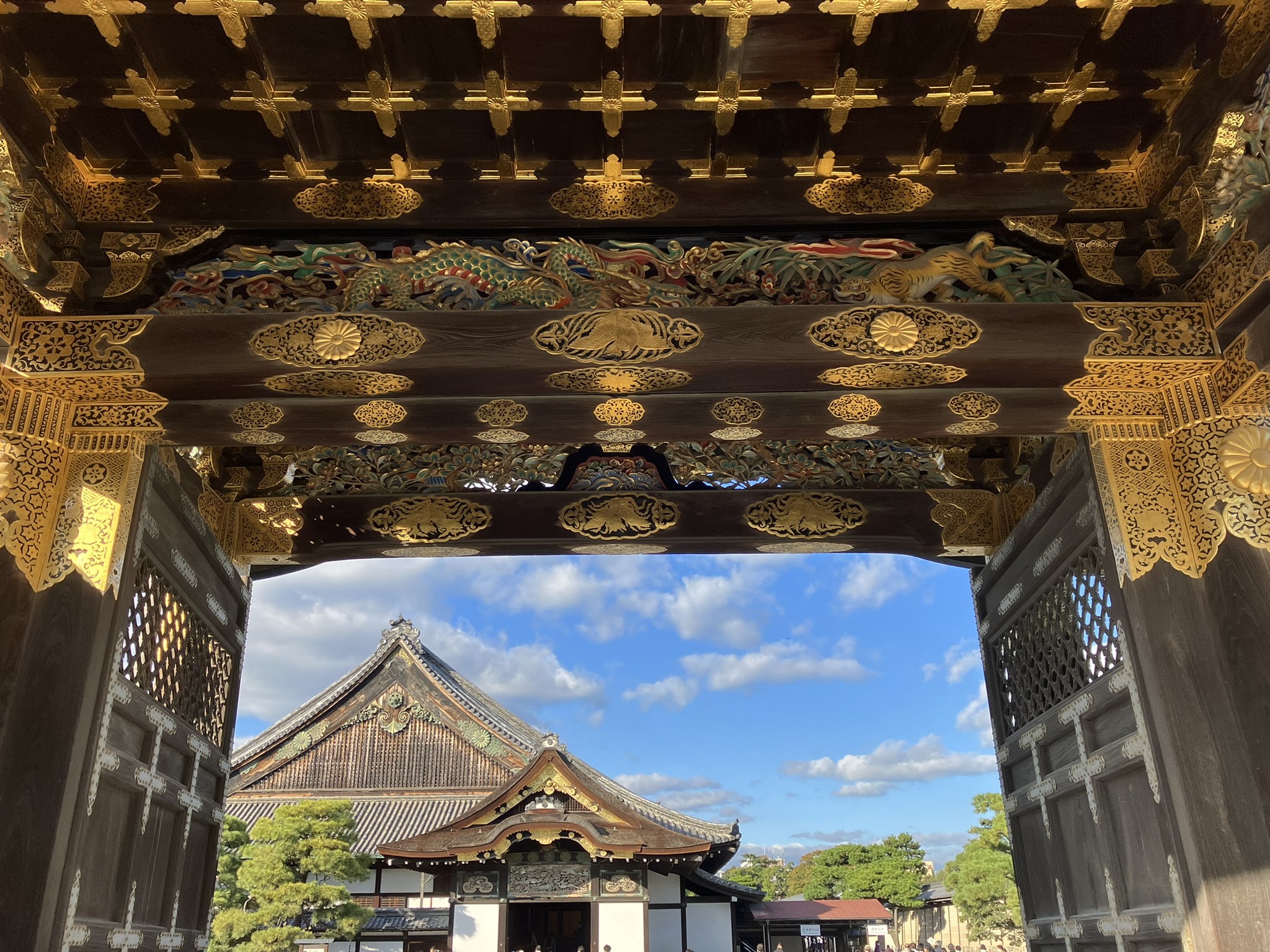
Walking through the gate we were directed by sign’s which would guide us around the grounds in a clockwise route, first leading us to the impressive Kara-mon Gate.
Walking through the gate led to a large open courtyard surround by walls and pine trees where a part of the large Ninomaru Palace could be seen. The Ninomaru Palace still remains in its original form and served as the residence and office of the shogun during his visits to Kyoto. The palace is made up of six buildings that are connect by corridors arranged in a diagonal line from the southeast to the northwest and has 33 rooms and over 800 tatami mats!
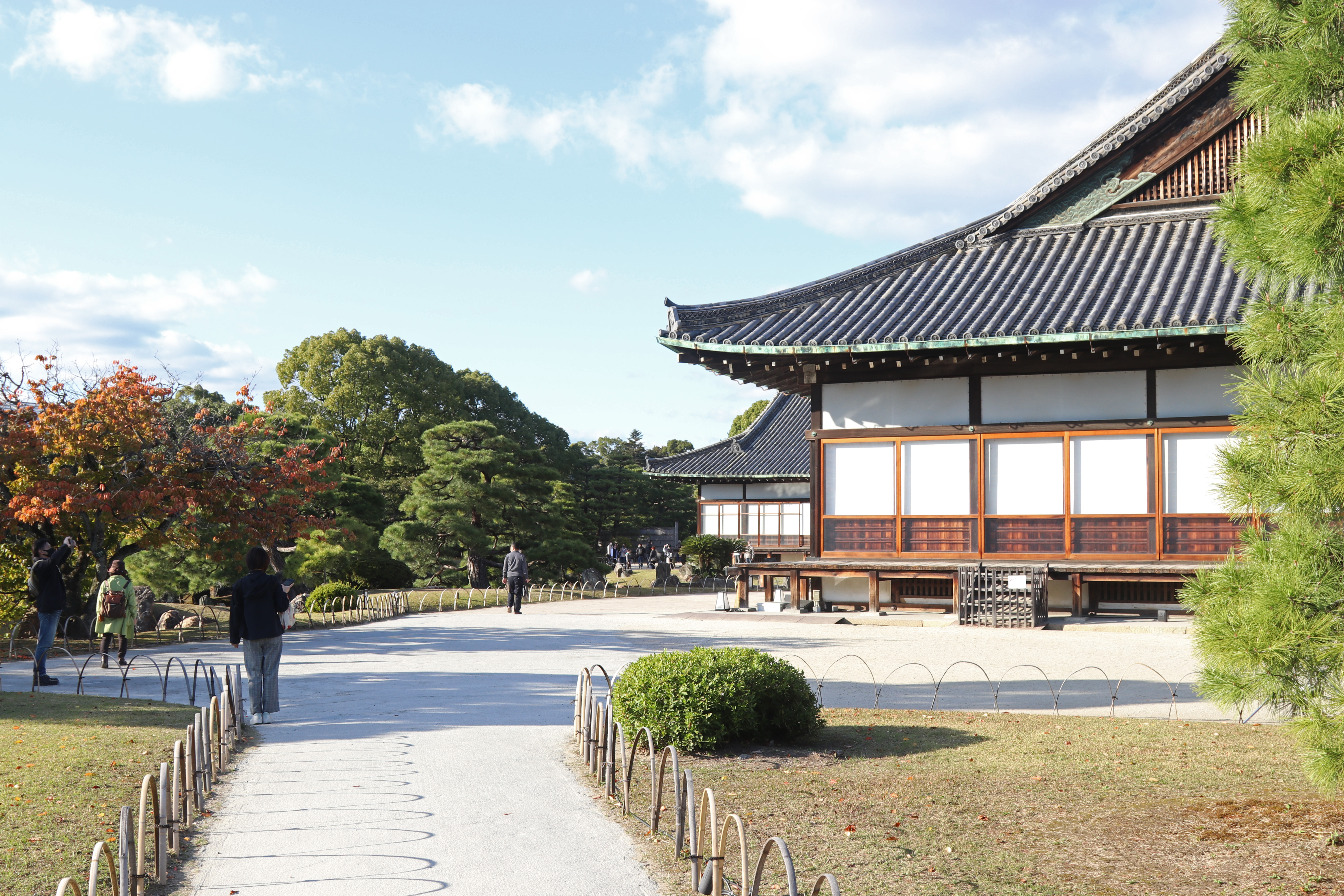
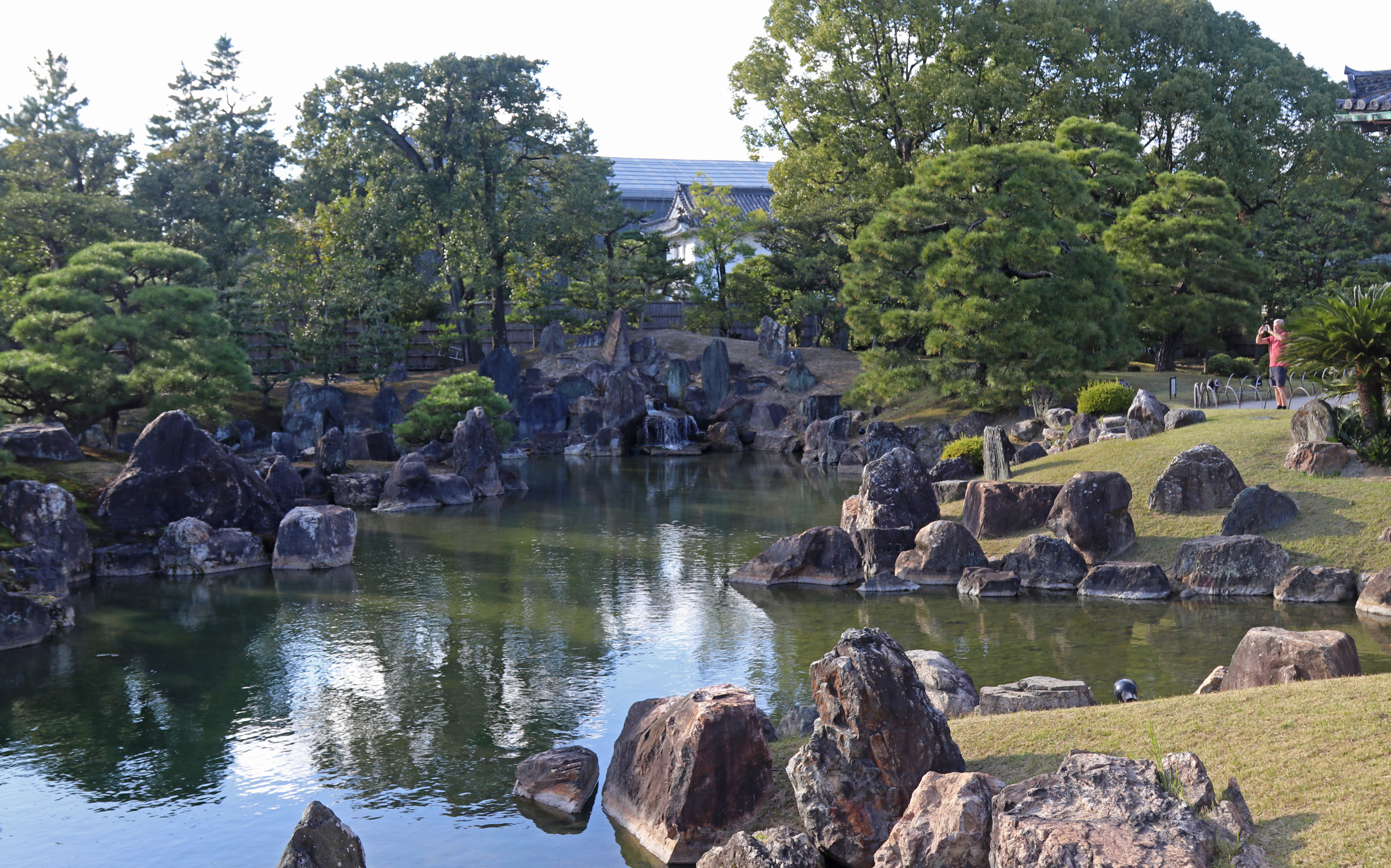
The garden was redesigned by Kobori Enshu, the commissioner of works for the 1626 Imperial visit. The design is a classical Shoin-zukuri style garden, meaning it has a large Horai-jima island which symbolizes paradise which is flanked by a crane island and a turtle island which both represent metaphors for longevity. The garden was redesigned to be viewed from three different directions, two viewpoints from the Ninomaru-goten Palace which are clear to see and another from the Gyoko-goten Palace which has since been dismantled.
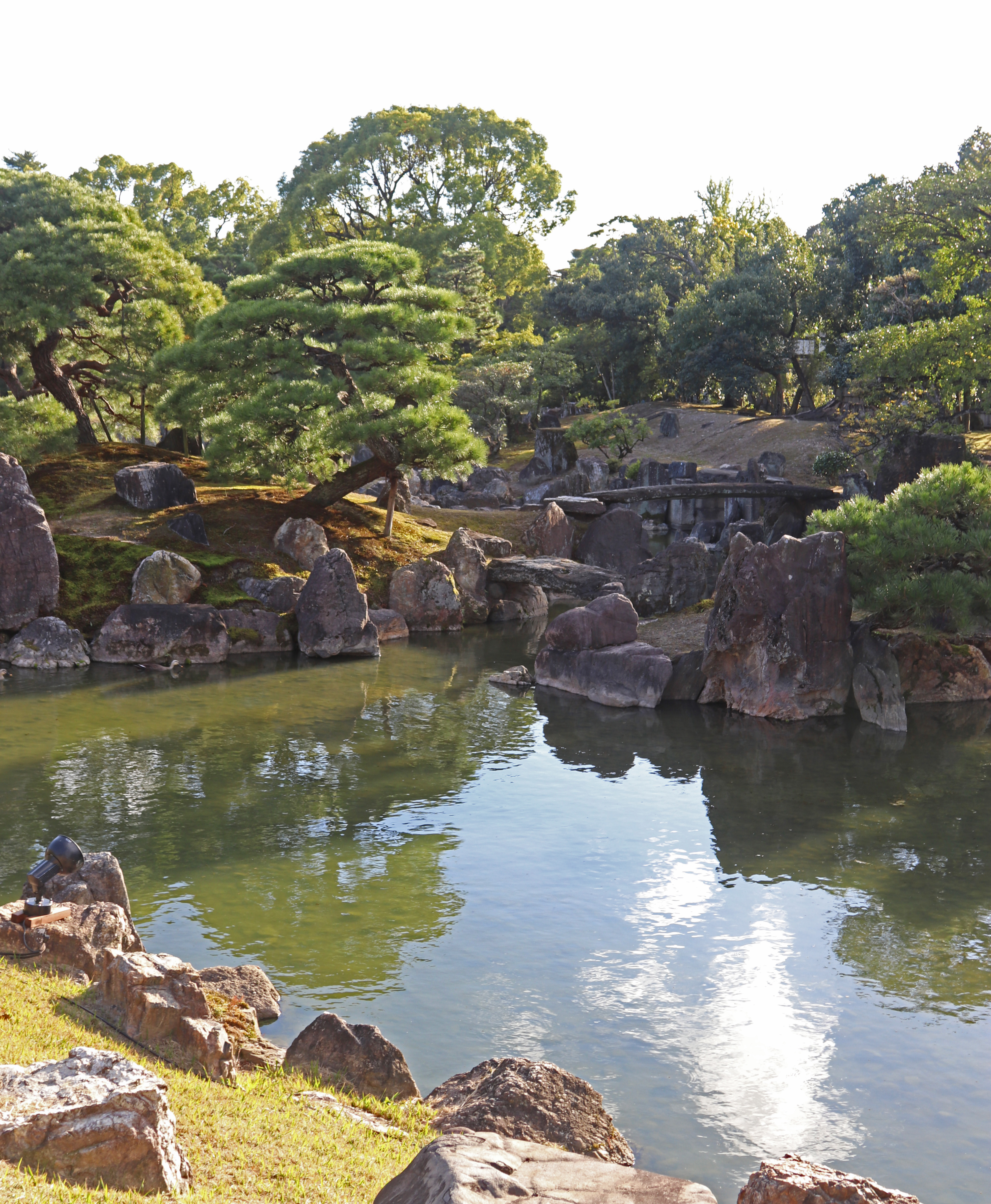
From Ninomaru Garden we entered the inner moat and walked over a bridge and through the Honmaru east gate to the Honmaru Garden, where there were pathways winded through lawned areas surround by many trees, with a great viewpoint in the southeast corner where we were able to climb up steps on the foundations of the old castle keep.
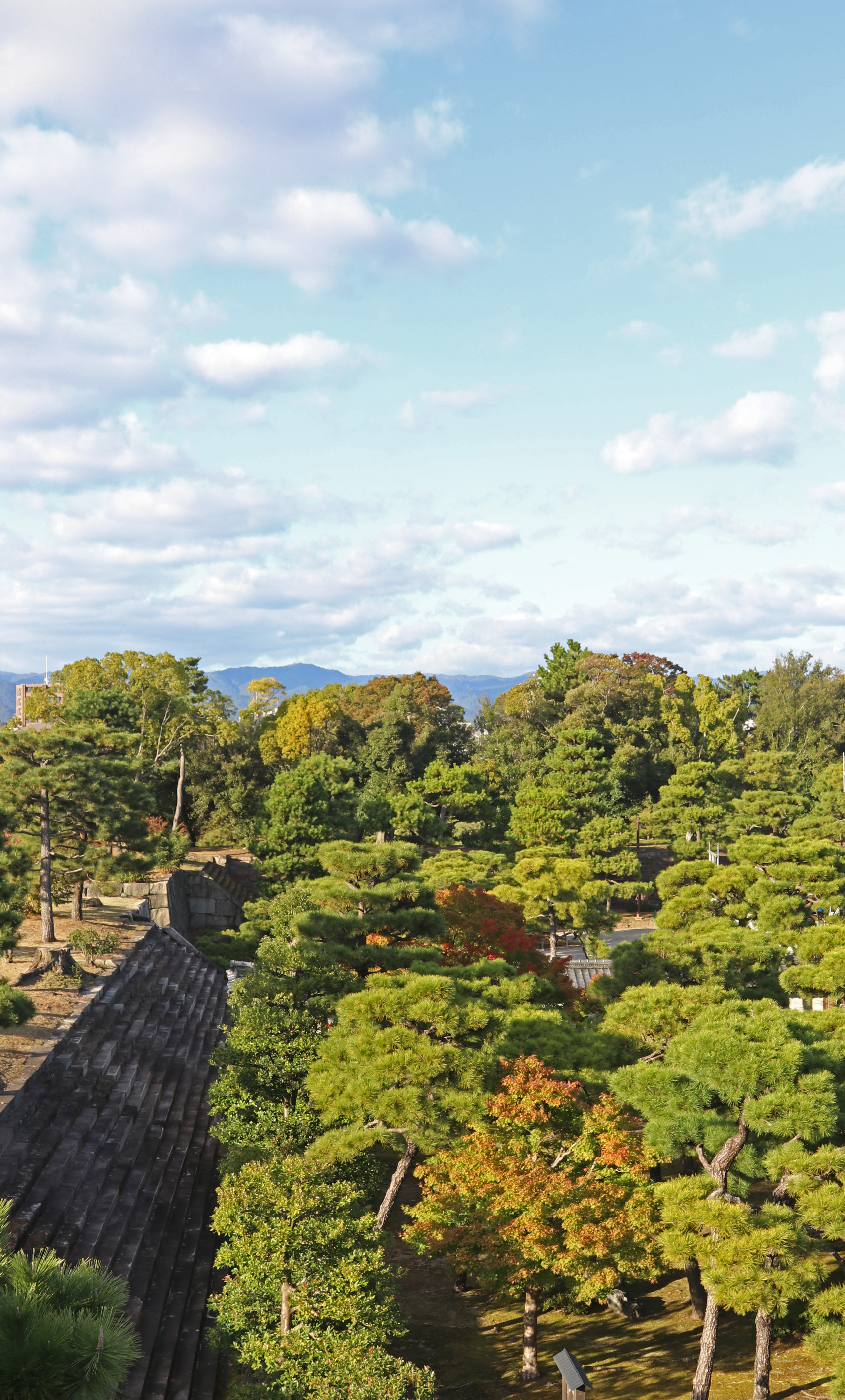
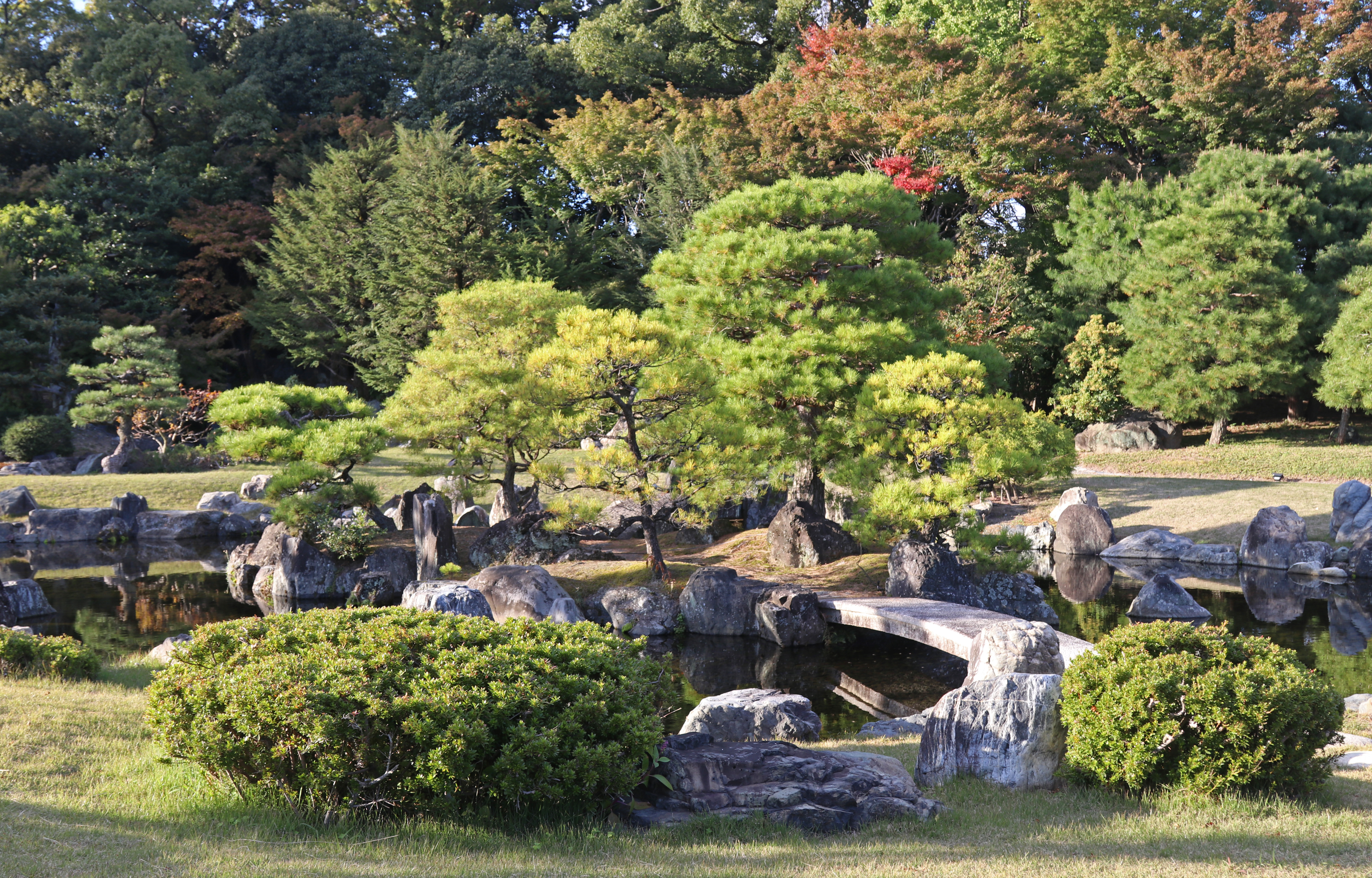
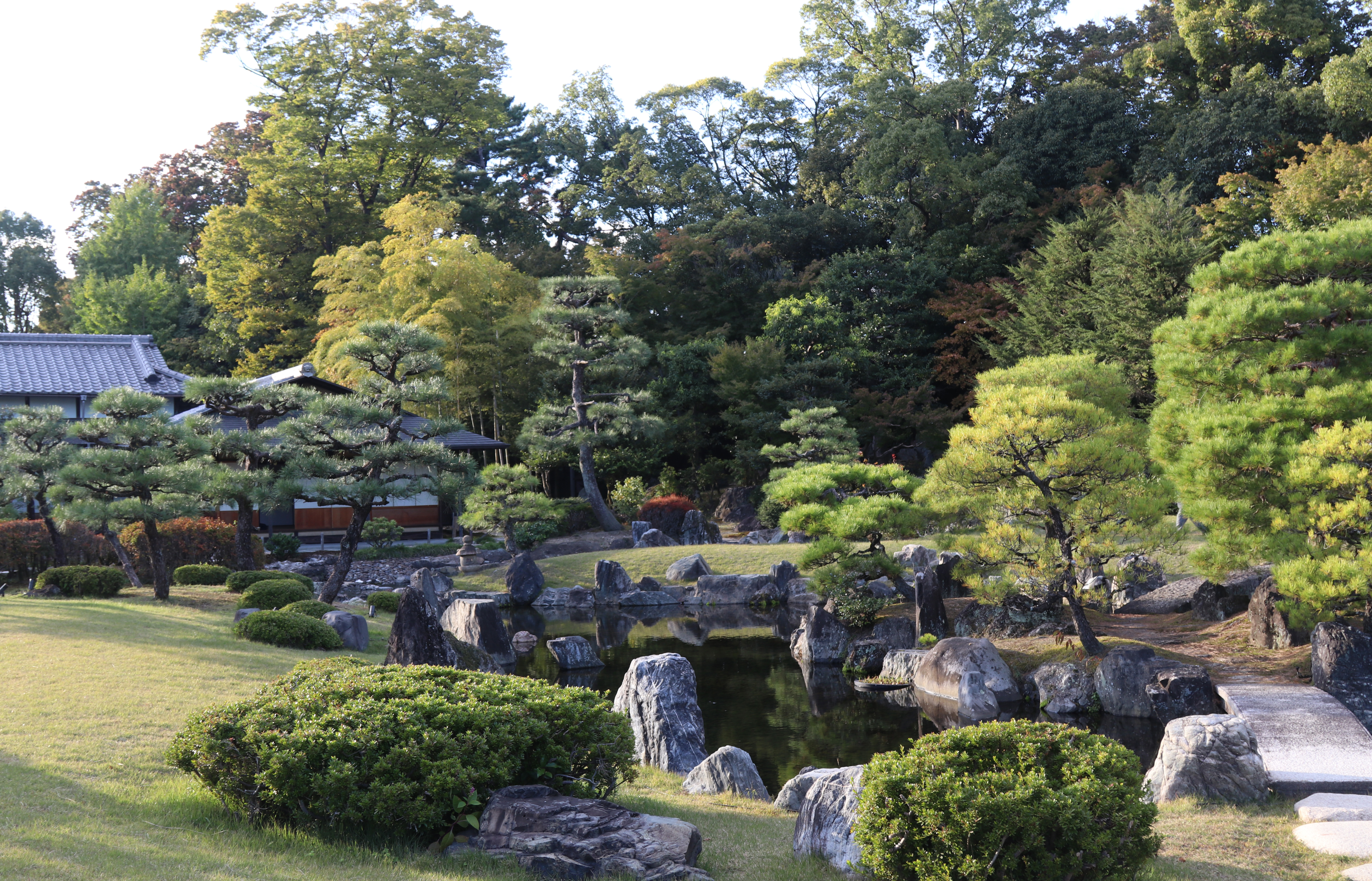
As mentioned, while walking arounds the grounds we noticed that there were loads of trees! And some very nice mature examples of Japanese Black and Red pines. In Japan, and especially in these types of grounds, even the large mature trees are maintained managed and styled. Something we noticed when we first started visiting Japan.
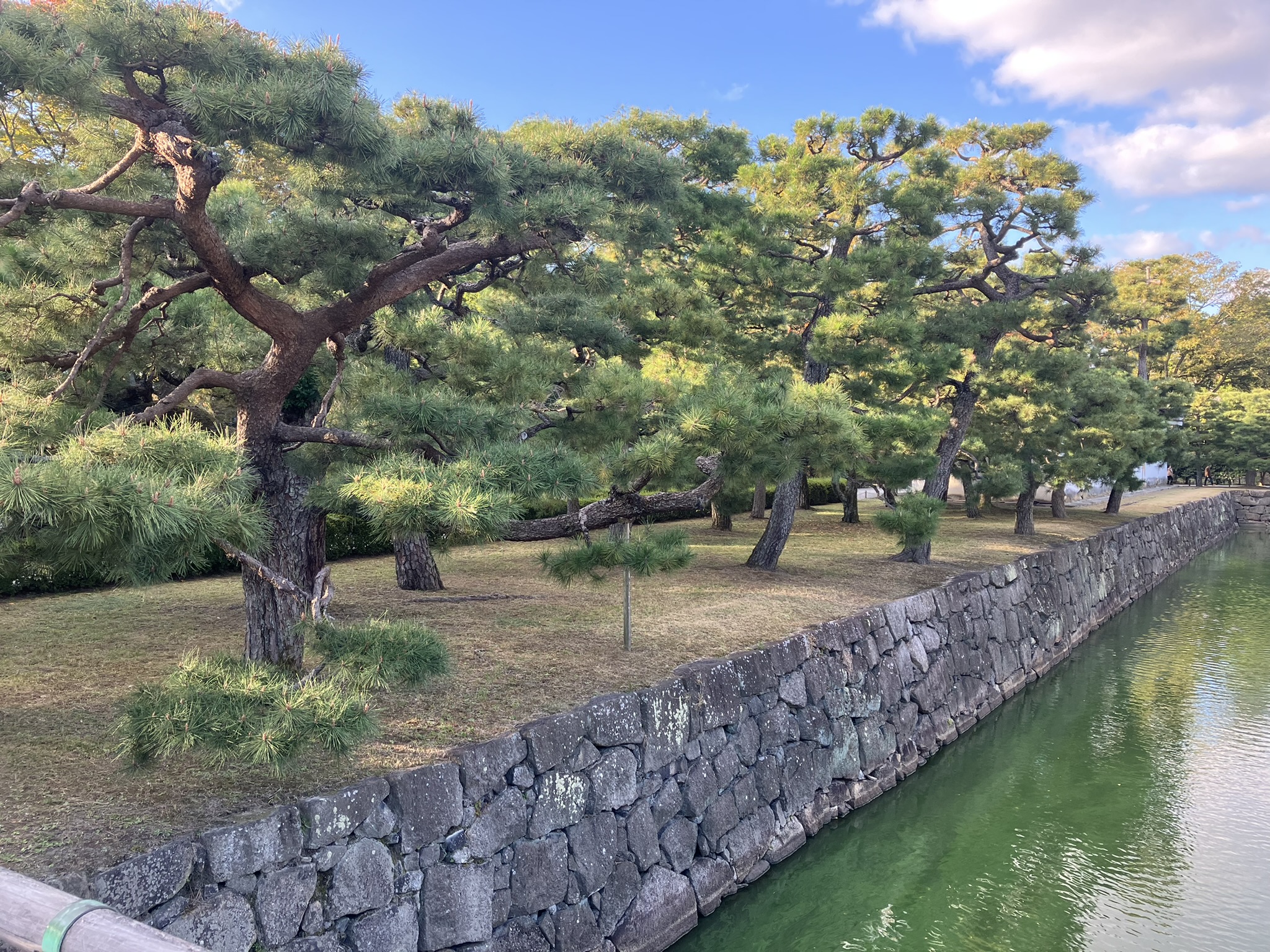
From, the castle we then heading back to our hotel, though still having a bit of time we decided to walk black via the Kyoto Shinkyogoku Shopping Street, which basically is an indoor street full of traditional and new shops and restaurants, these shopping streets seem to be common in most the major cities we have visited and are always a hive of activity! Once back at the hotel, and after a quick freshen up it was back out to find something to eat!
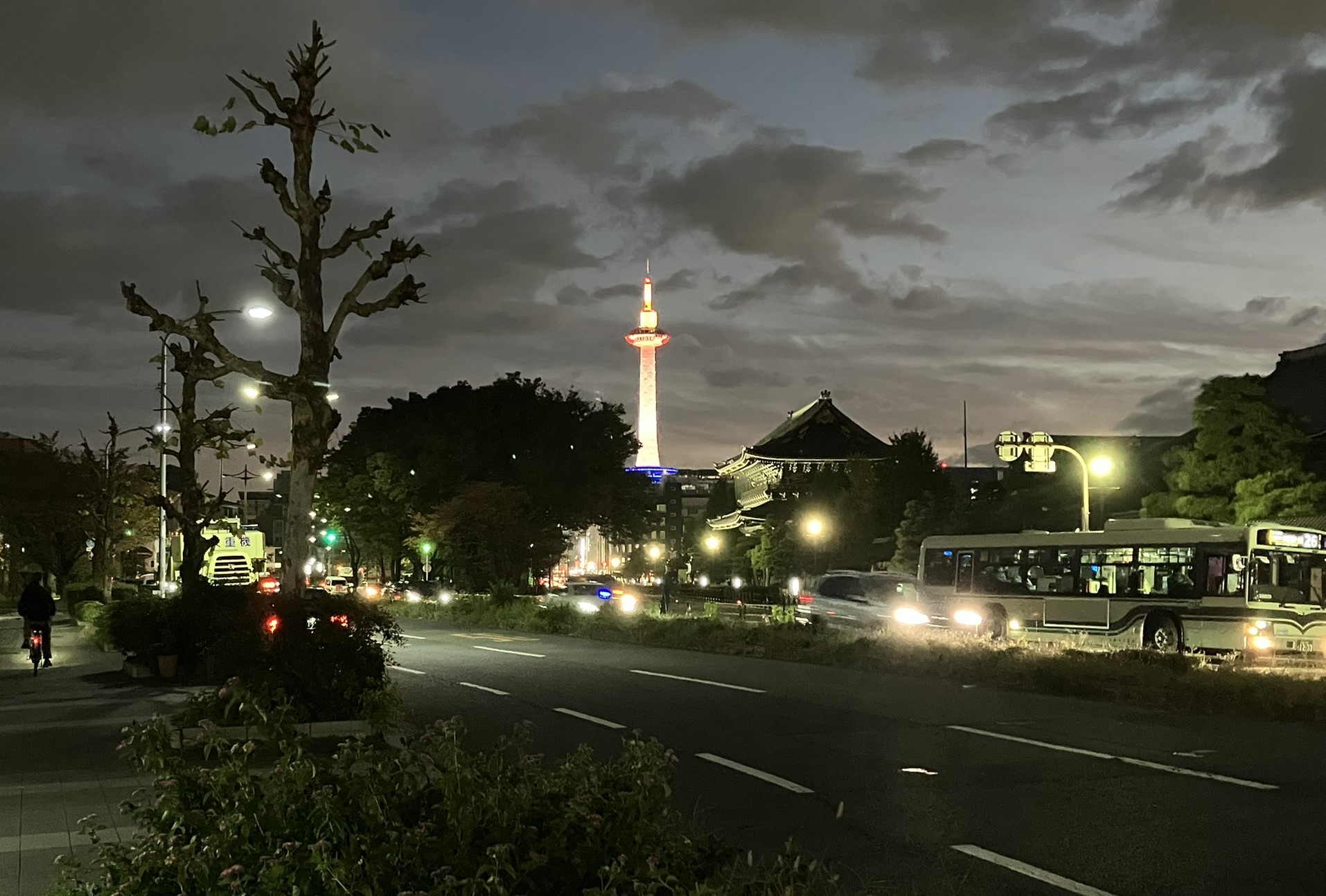
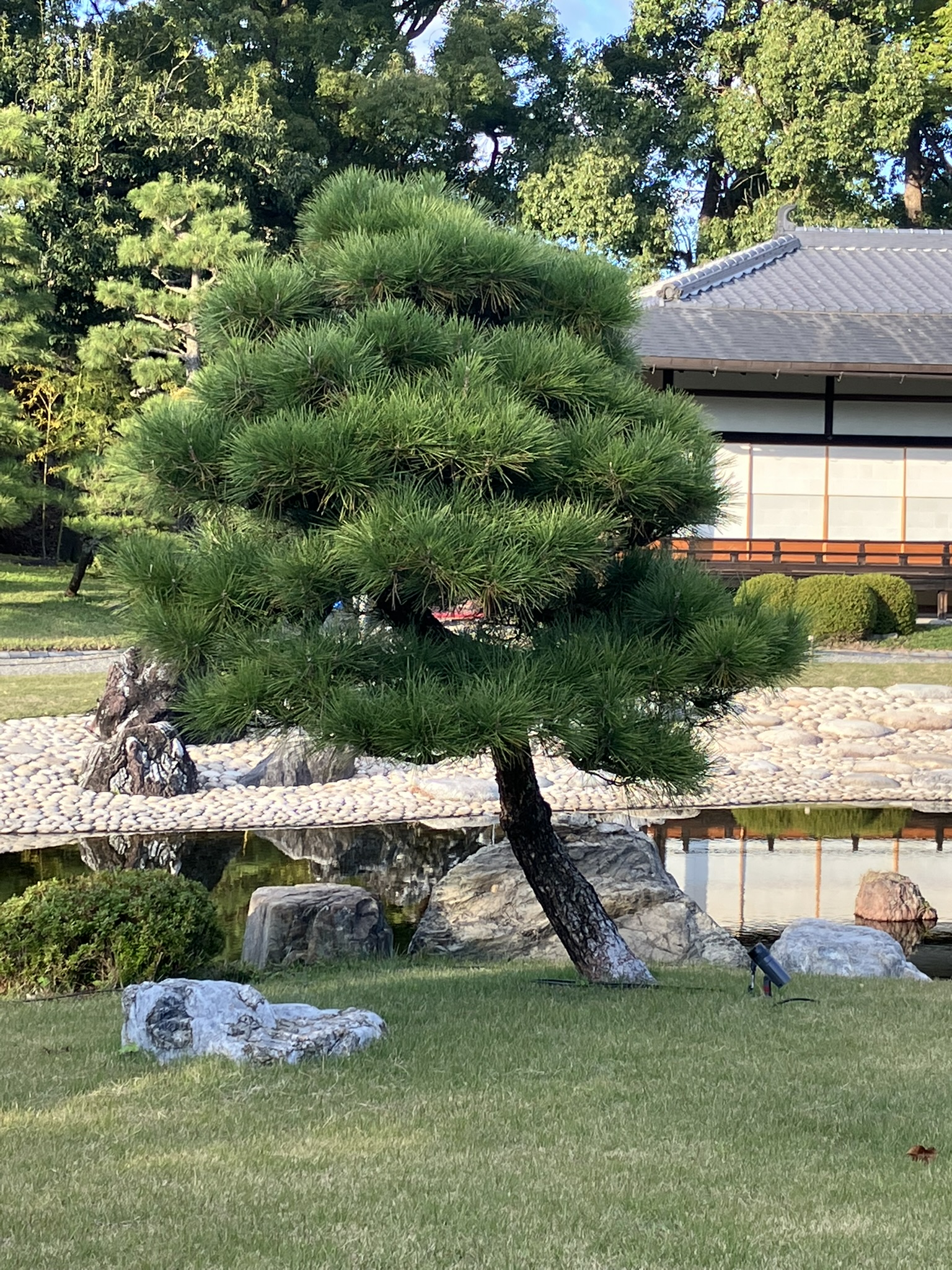
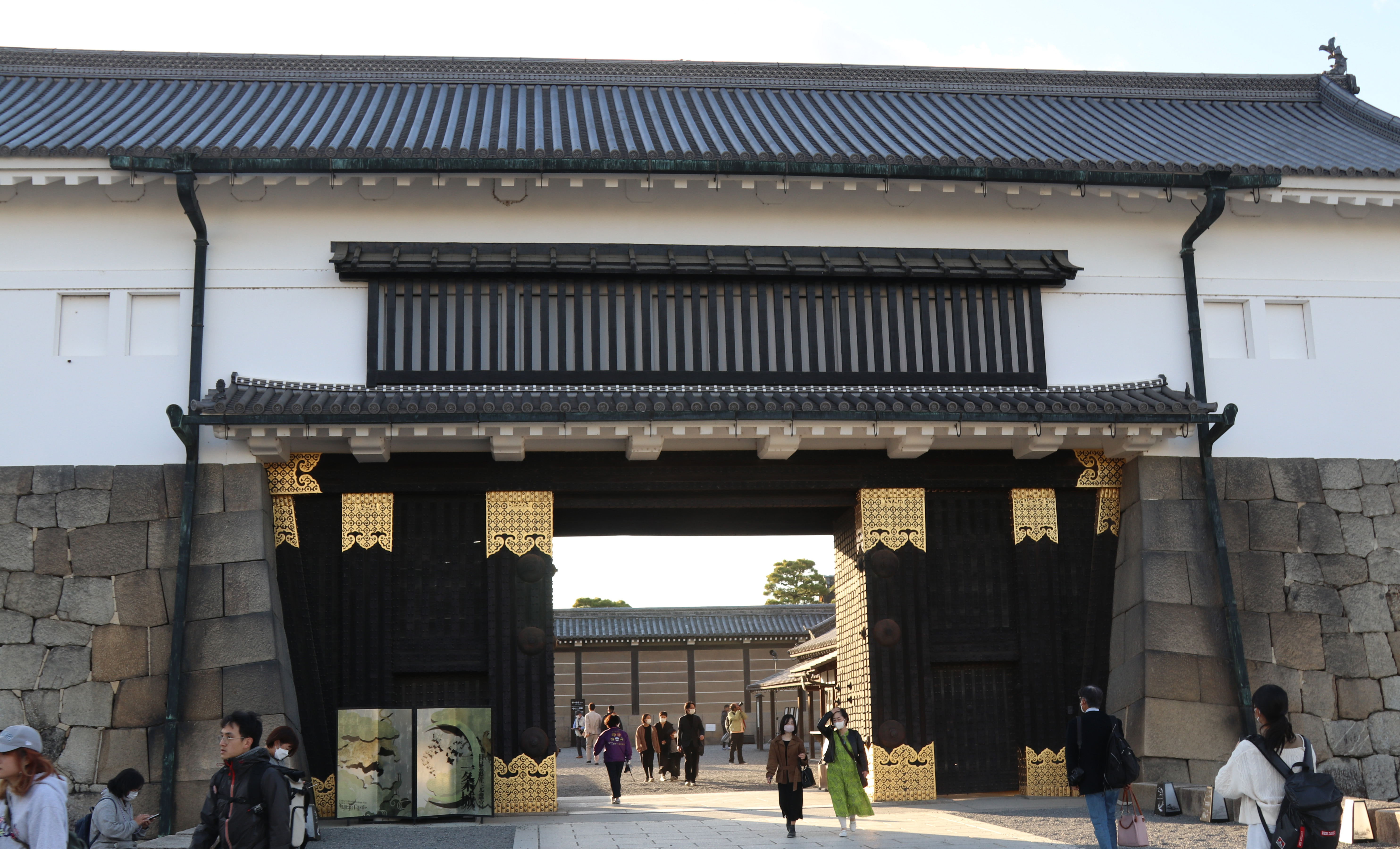
Heading straight to our
hotel which was about a 5 min walk from the Kyoto station we dropped our bags
off and headed straight back out to our first garden and castle from our very
busy itinerary, which was about a 40 minute walk. This was the Nijo-jo castle
and Ninomaru Palace and its gardens, which is a UNESCO world heritage site.
The castle is also easily
accessible by public transport with its entrance being right next to the Tozai
Subway line and taking only 15mins from Kyoto station. Also, the castle can be
reached by a number of City Bus’s from Kyoto Station only taking around 15 to
20 minutes.
Built in 1603 the Nijo
Castle was the residency of the first shogun of the Edo Period (1603 – 1867)
Tokugawa Ieysasu. 23 years later the palace buildings were completed by his
grandson Iemitsu, and later the castle’s keep was expanded to five stories. In
1867 the Tokugawa Shogunate fell, and the castle was used as imperial palace,
but was then donated to the city and opened to the public.
After paying our admission which was only 800 yen (about £4.80 at the current rate) for the gardens and ground, we entered the castle grounds through the impressive large Higashi Ote-mon eastern gate. This is the main gate to the castle and is thought to date back to 1662.

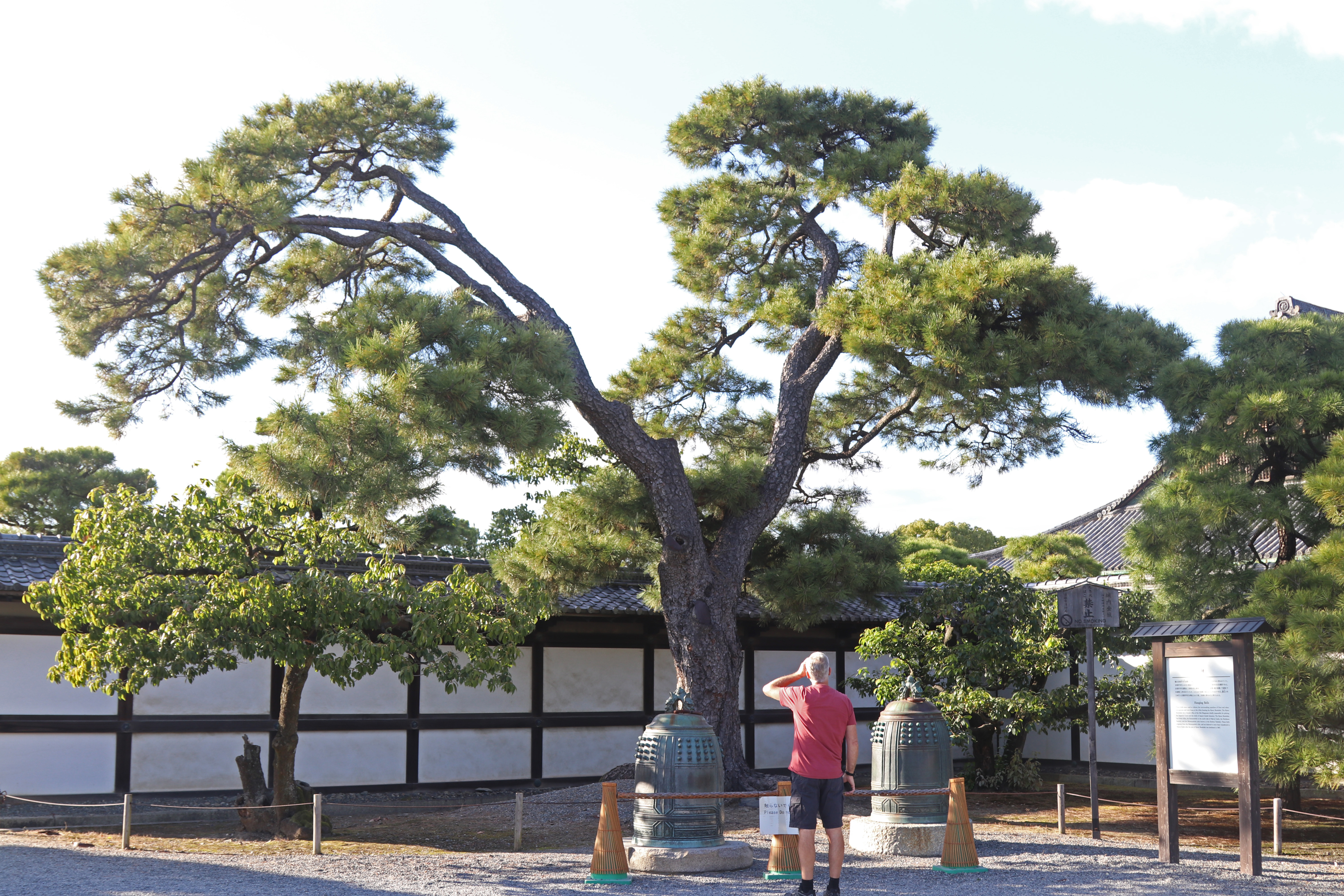
From here led us through another gateway to the stunning traditional Ninomaru garden! Full of Japanese pine trees, with a large pond, ornamental stones, bridges and waterfall…walking around the garden was simply stunning and also allowed for a better view of the outside of the palace itself.
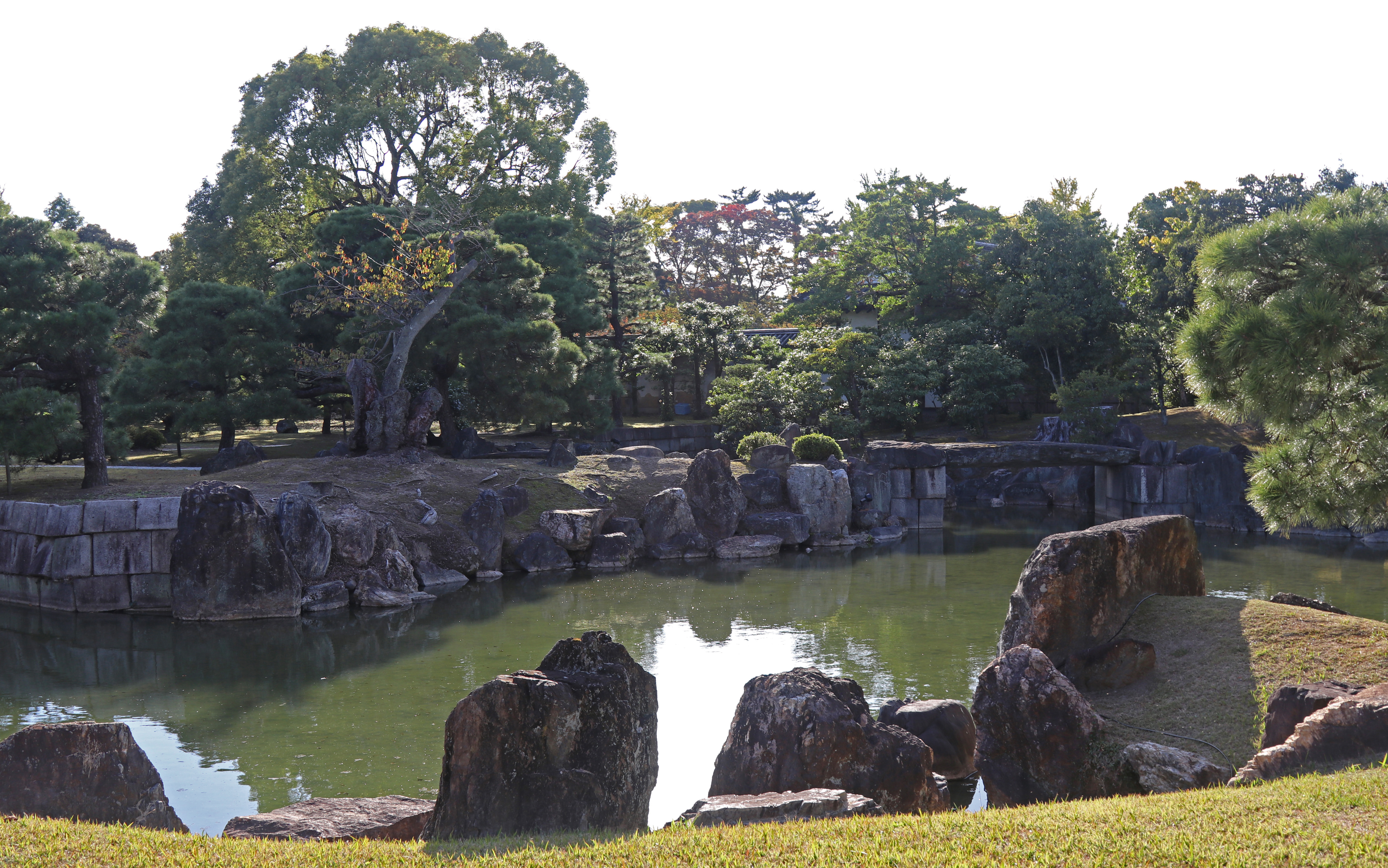
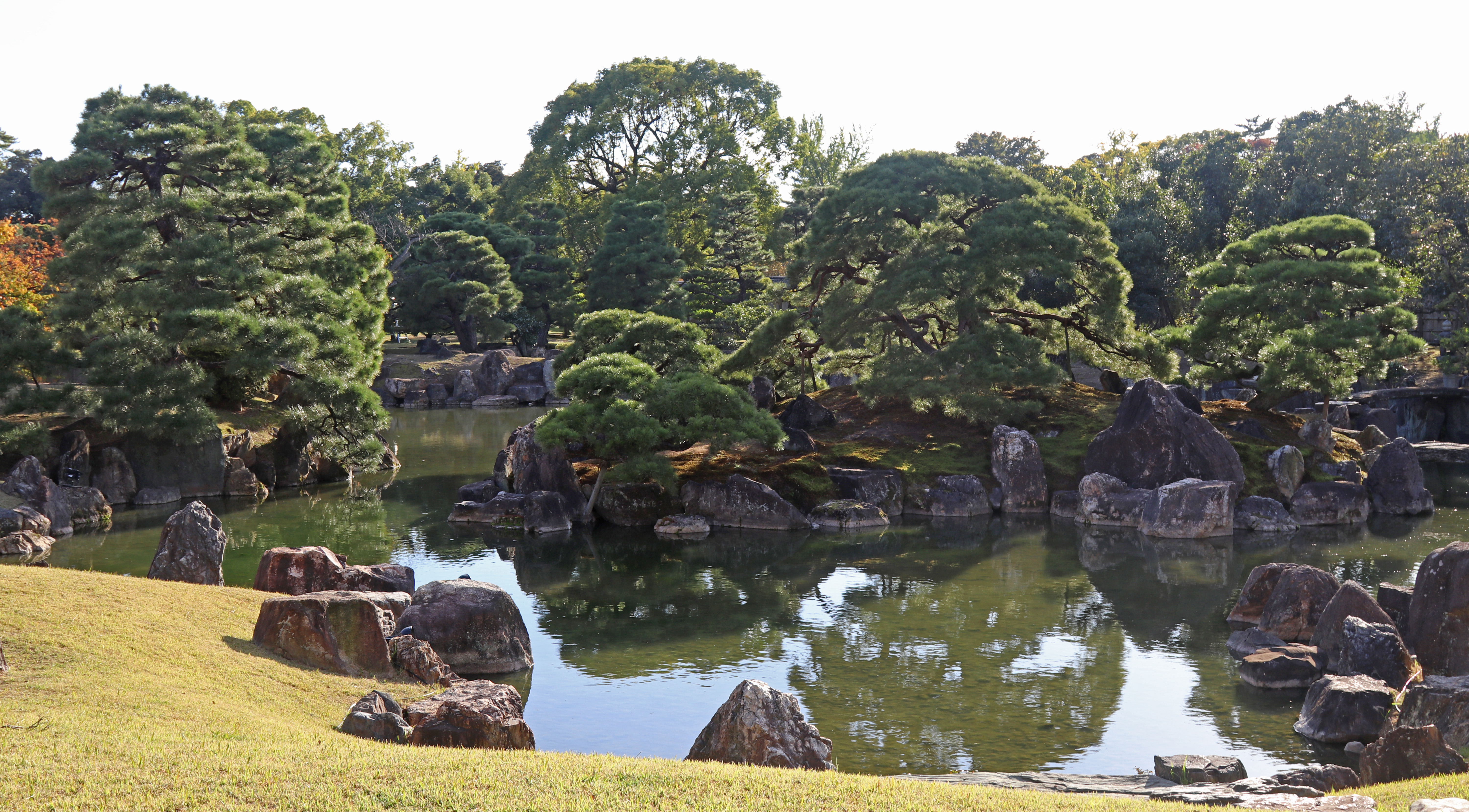
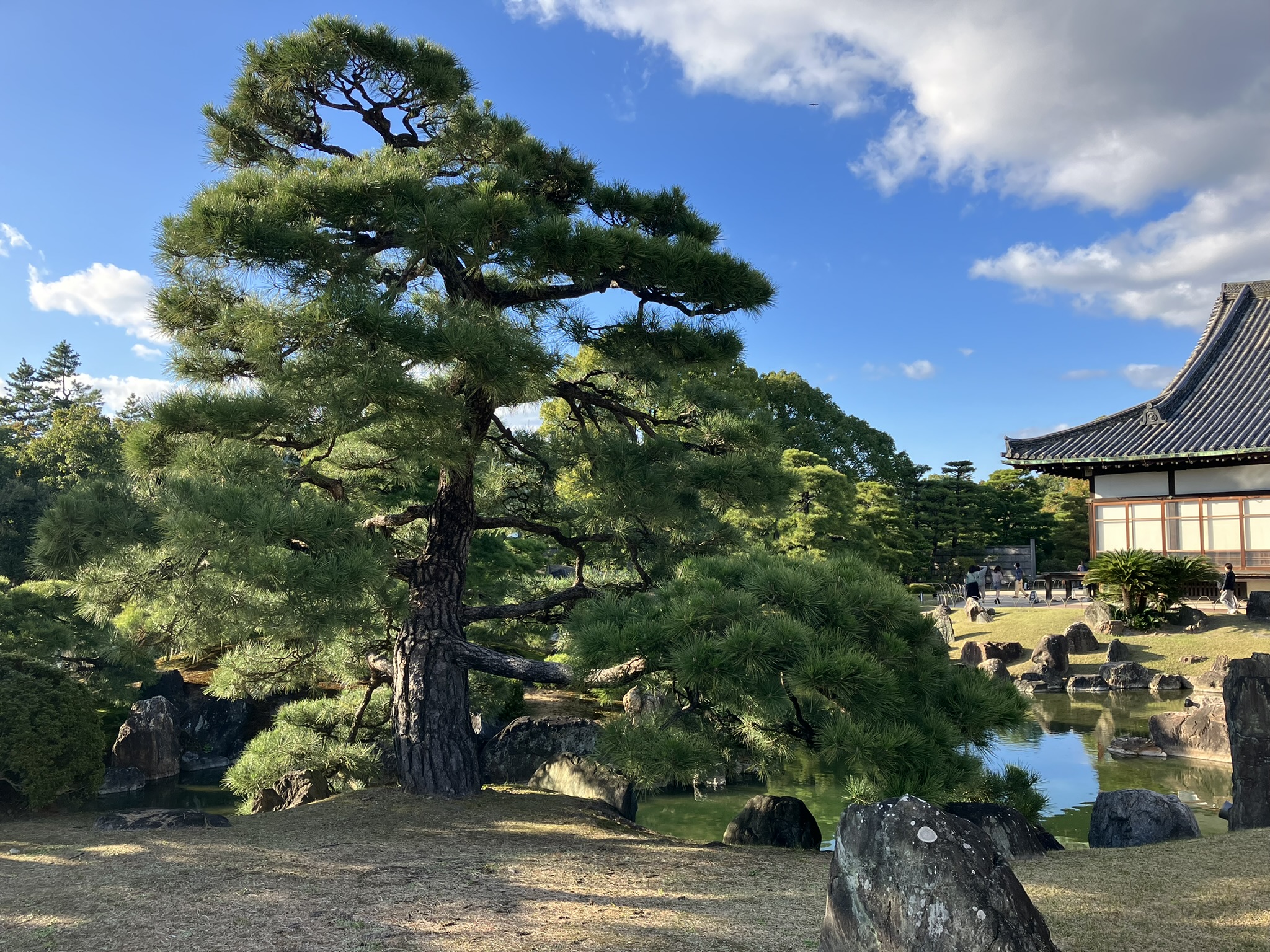
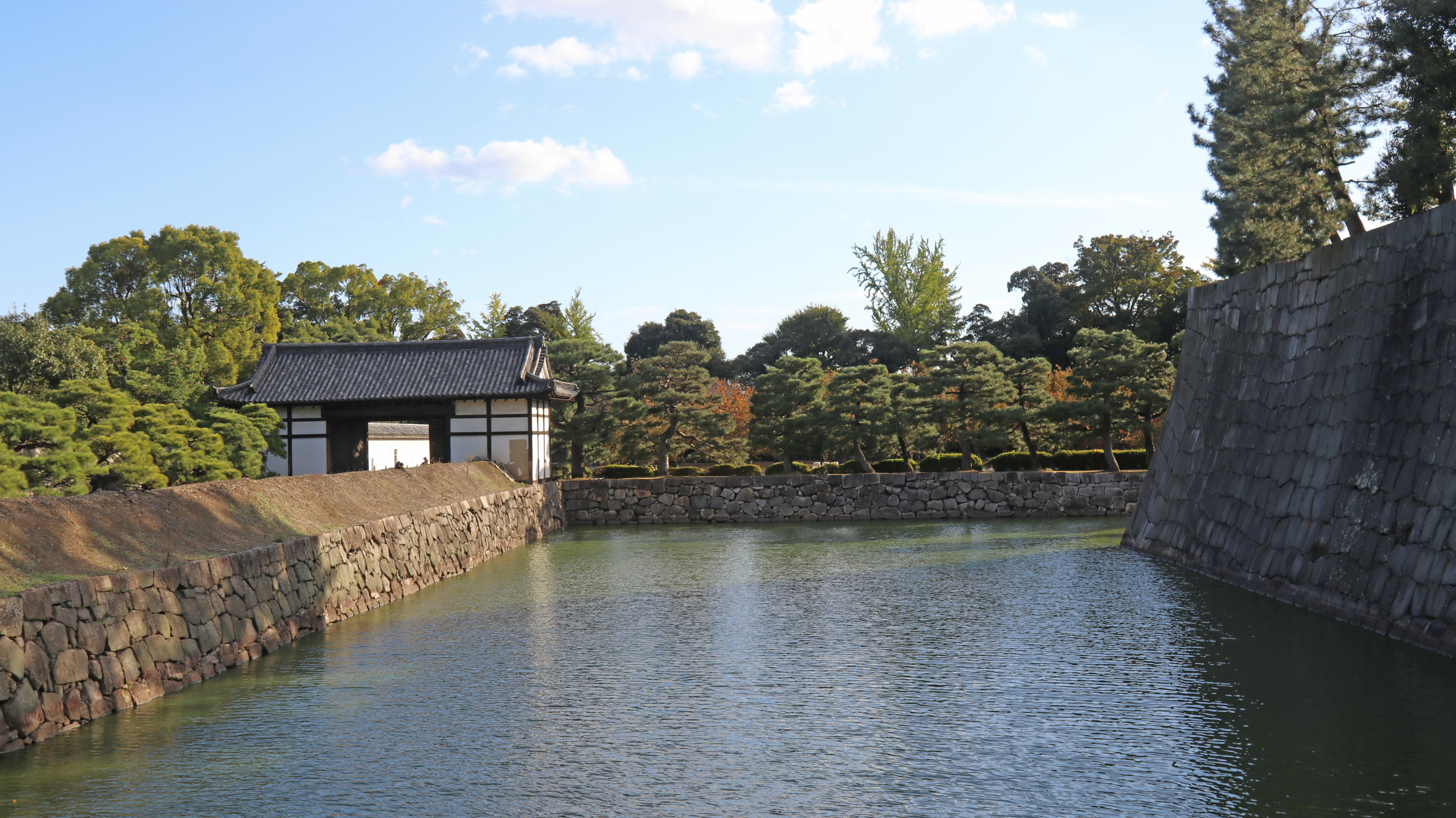
From here we got
a fantastic view of the garden and the defence walls. The
present Honmaru-goten Palace was moved from the Kyoto Imperial Palace grounds
to its current location inside the inner moat in 1893 and is a very rare
survival of this palace architectural style and so has been designated an
important cultural property by the Japanese government. The we visited this
time the palace was getting renovation work carried out on it and so was
covered in scaffolding. The Honmaru Garden which is located in the south of the
palace was original created for a visit by the then Emperor Meiji (1852-1912)
and was then later redesigned.
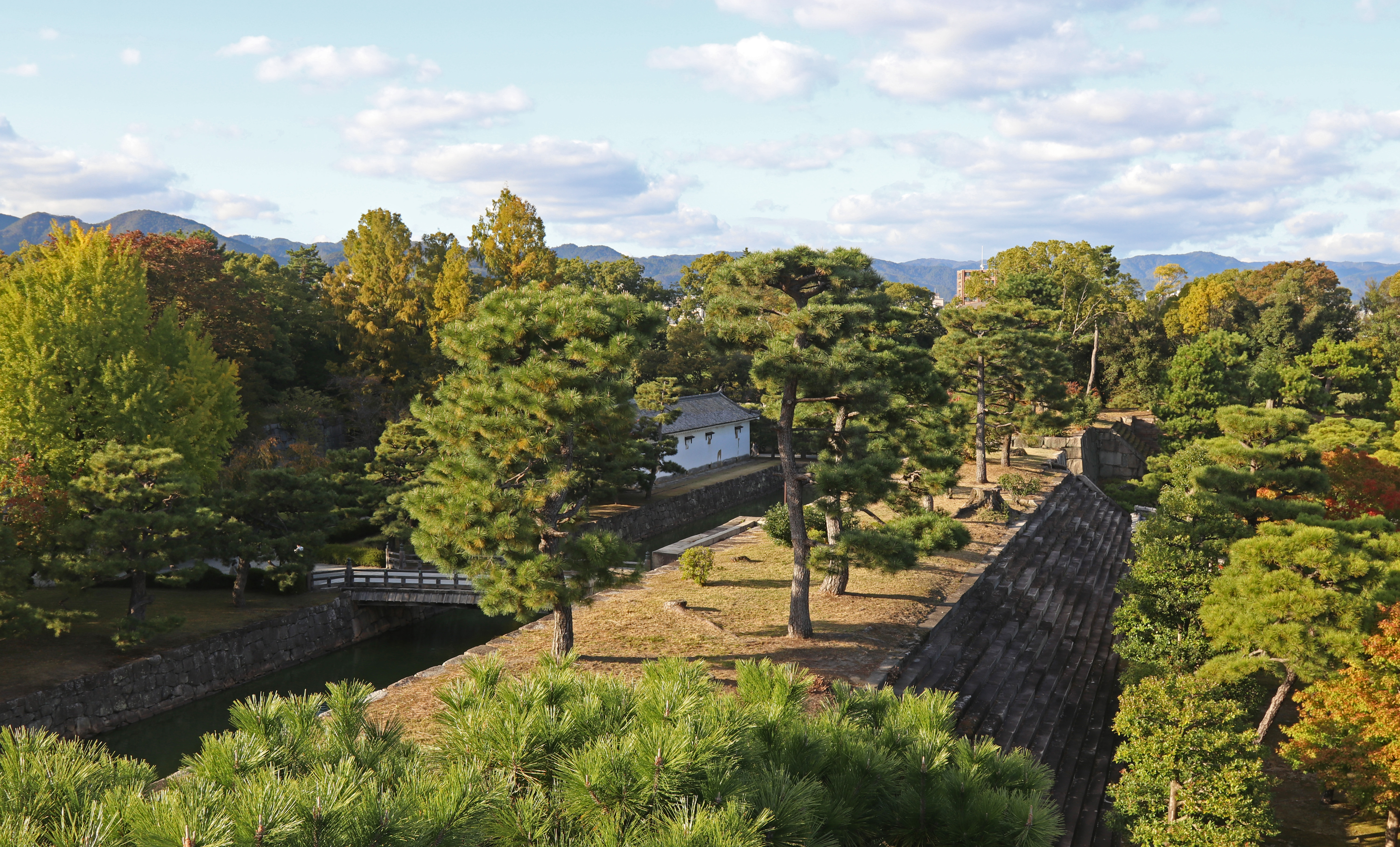
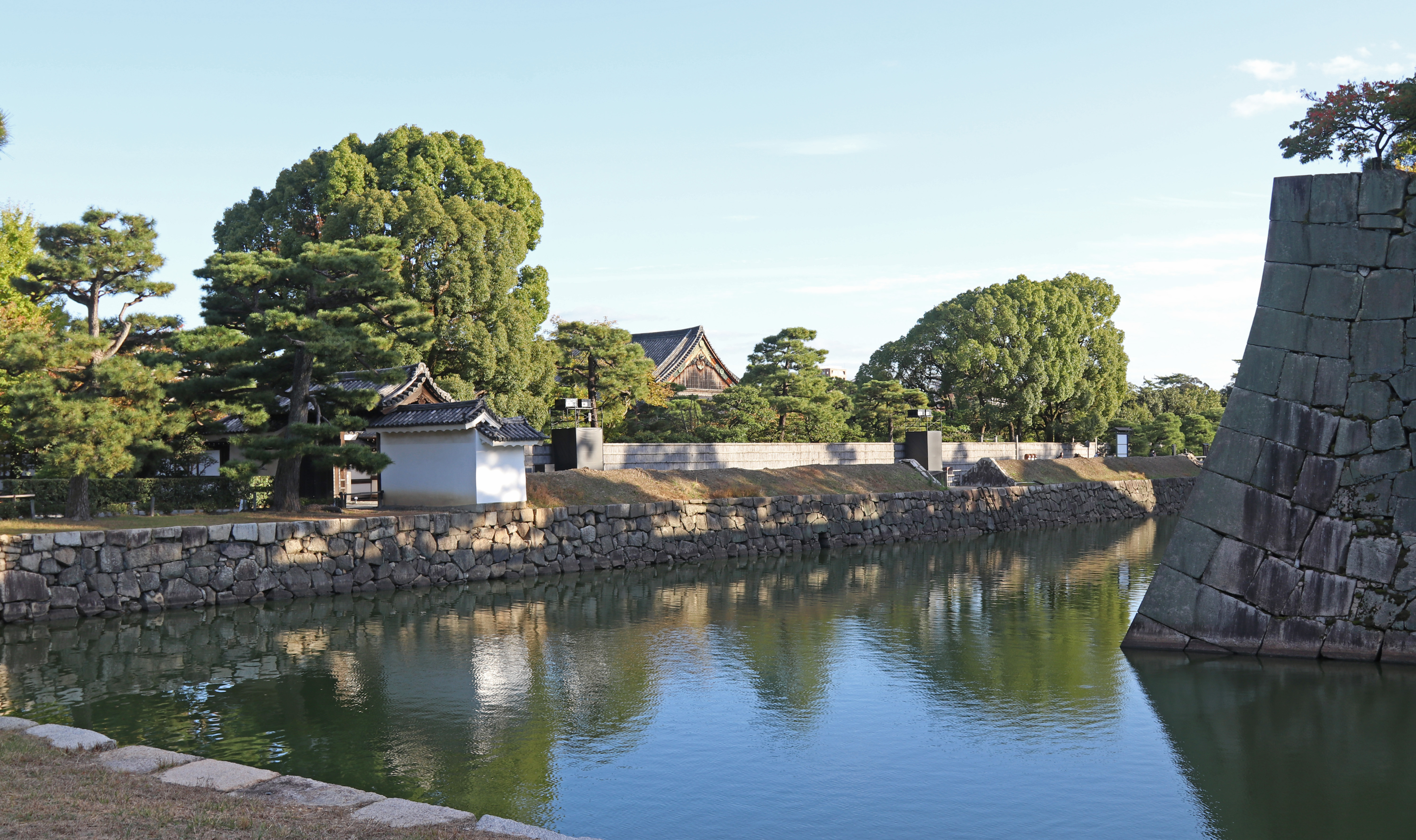
From the Honmaru Garden we then headed through the Honmaru west gate and back over the inner moat walking anti-clock wise to the Seiryu-en Garden. This smaller garden features both a Japanese style garden with a pond, islands, pine trees and two teahouses, but also a more western style lawned area too, and so is a fusion of both Eastern and Western styles. The garden was only laid out in 1965, using some of the buildings, trees, and stones from the garden of the Kyoto mansion of the wealthy Suminokura merchant family.
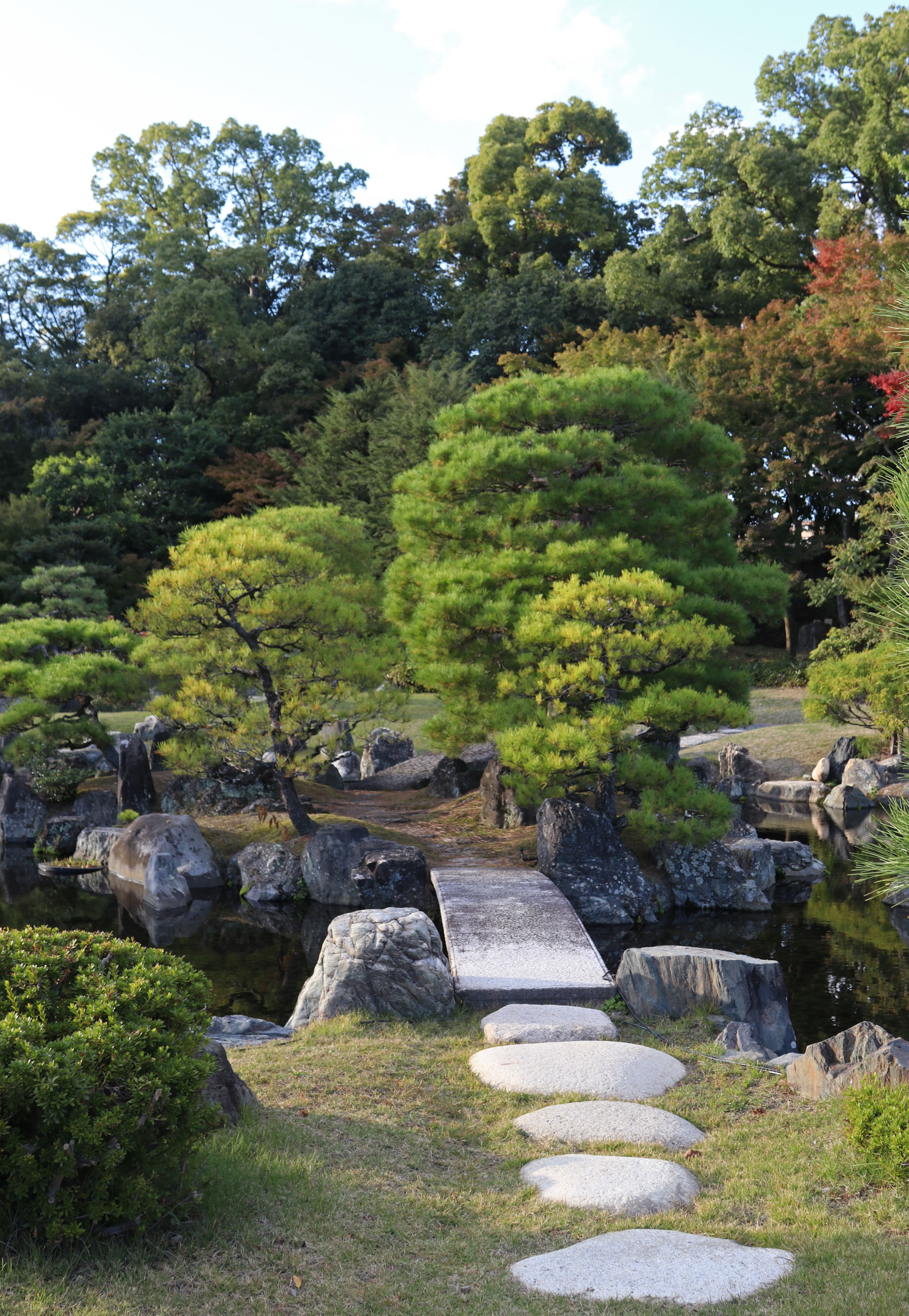
From the
Seriyu-en Garden we walked back to the Higashi Ote-mon Gate where we had first
started. The grounds of the castle were fantastic, and we really enjoyed
wandering around them!
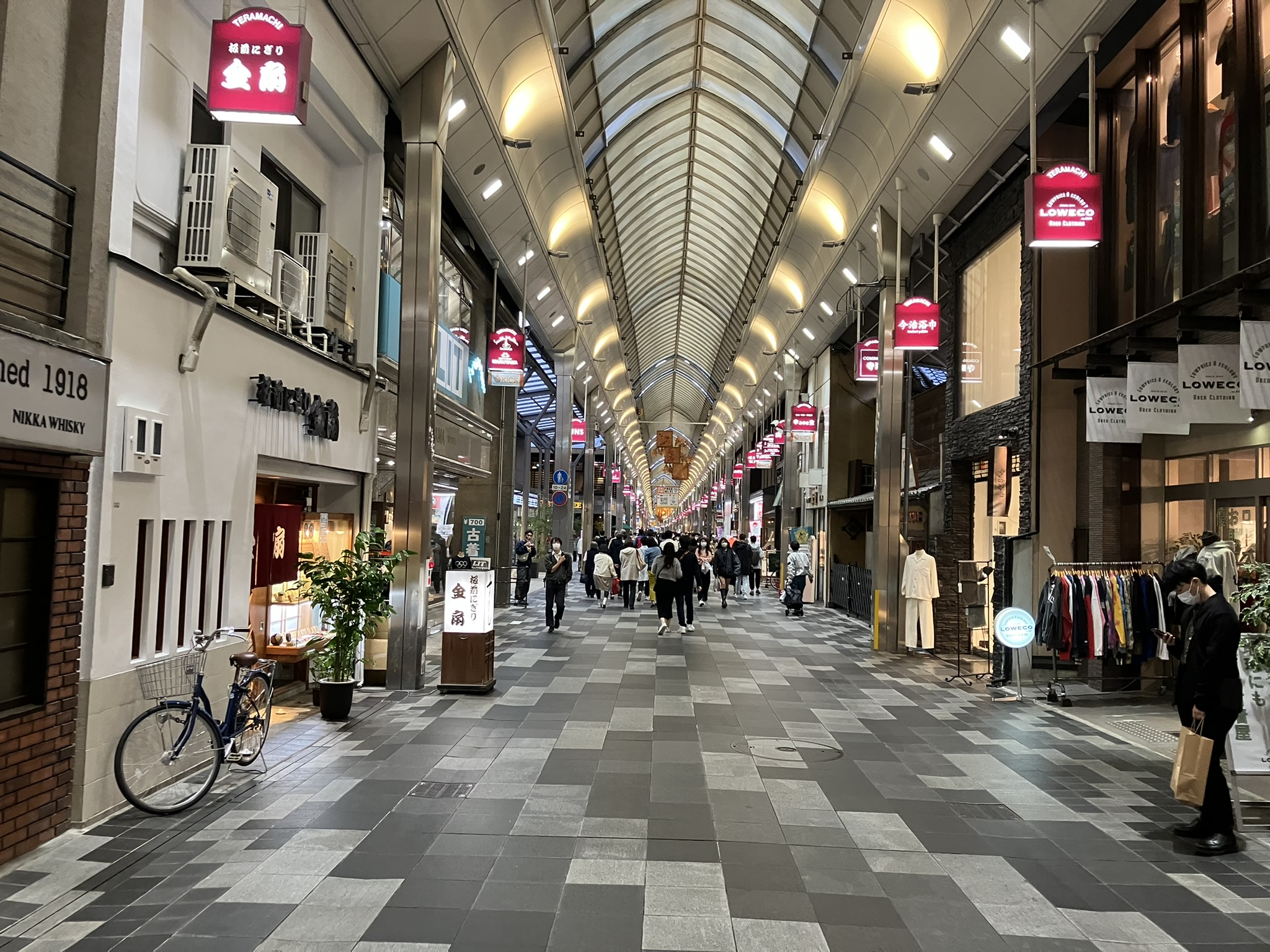
On this day we
walked 9 miles, which isn’t bad considering we had been awake for over 35
hours!
Please find our other Kyoto articles in the 'Kyoto' section of the website.
